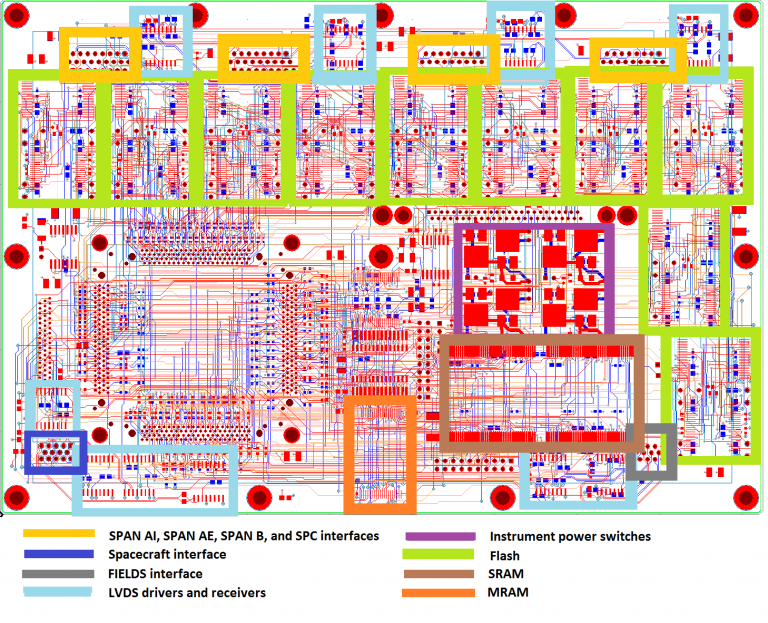SSL aerospace engineers have a wealth of experience handling the unique constraints of designing electrical systems for use in space. Spacecraft typically have tight constraints on the power available for running electronics. There are the hazards of radiation exposure and the difficulties of operating in a vacuum, without any air to dissipate heat away from electronics. Perhaps the most challenging constraints have to do with reliability. When you’re launching an instrument into space you can’t go out and fix it, so SSL aerospace engineers have to make certain it won’t break in the first place. Often that’s done via redundancy, where you have multiple circuits that can do the same thing: if one breaks, another keeps going.
Surprisingly, these constraints sometimes mean the use of older technology. All NASA missions are required to use high-reliability circuits, and those tend to be older circuits. In addition, old-fashioned analog circuits are more efficient, so they are able to operate within tight power constraints. Science instruments are typically gathering data in an analog format. If there were no constraints on power use, that analog signal could immediately be converted to digital at a very high rate. However, with the limited power available, engineers have to figure out how to shape that analog signal and sample it down to a lower conversion rate.
SSL has worked to retain the lost art of analog engineering. For example, we have the capability to design and build custom power converters, which are more efficient than commercial ones as well as tailor made to meet the needs of a project. With expertise encompassing the traditional as well as the state-of-the-art, SSL engineers find ingenious solutions to the problems of spaceflight design.
